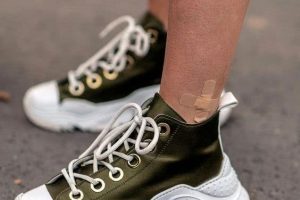Dance is a universal language that transcends cultural boundaries, and the footwear worn by dancers plays a crucial role in their performance. Dance shoes are meticulously designed to provide not only comfort and support but also to enhance the dancer’s movements, allowing them to express themselves artistically. In this extensive article, we will delve into the captivating world of dance shoes, exploring the diverse styles, their design, function, and the unique requirements of various dance genres.
Introduction
Dance has been an integral part of human culture for centuries, and as it evolved, so did the shoes worn by dancers. The right pair of dance shoes can significantly impact a dancer’s ability to move with grace and precision. While the design and function of dance shoes may vary across different dance styles, they all share a common goal: to empower dancers and elevate their performance.
In this comprehensive guide, we will explore the fascinating world of dance shoes, covering various dance styles, their unique shoe requirements, and the science behind designing footwear that seamlessly blends fashion and function.
The Anatomy of Dance Shoes
Before we delve into the specific styles of dance shoes, it’s essential to understand the basic components and features that make these shoes unique. Dance shoes share several common characteristics:
1. Suede Soles:
- Most dance shoes have suede soles that provide the right balance of slip and grip. Suede offers just enough slip for smooth movements, allowing dancers to glide effortlessly across the floor, while also offering enough grip to maintain control.
2. Arch Support:
- Dance shoes, especially those designed for ballet and contemporary dance, often feature built-in arch support to help dancers maintain proper alignment and reduce strain on the arches of their feet.
3. Heel Height:
- Heel height varies significantly between dance shoe styles, with some featuring flat soles and others having high heels. The choice of heel height is closely tied to the specific demands of each dance style.
4. Secure Fastenings:
- Dance shoes usually have secure fastenings, such as buckles, laces, or elastic straps, to ensure a snug fit that doesn’t slip during intense movements.
5. Lightweight Construction:
- Dance shoes are typically lightweight, enabling dancers to move with agility and ease.
6. Breathability:
- Proper ventilation is crucial to prevent excessive sweating and discomfort during extended dance sessions.
Now that we’ve covered the fundamental components of dance shoes, let’s explore the diverse styles of dance shoes, their design, function, and unique characteristics.
Ballet Shoes: Graceful Elegance
Ballet is known for its exquisite grace and precision, and ballet shoes are a testament to this art form’s beauty. They are designed to provide the utmost flexibility and support for dancers, enabling them to execute the most demanding and graceful movements. Here are the key aspects of ballet shoes:
Design and Function of Ballet Shoes:
- Split Sole: Ballet shoes typically have a split sole design, which separates the sole into two parts: the forefoot and the heel. This design allows for maximum flexibility and articulation of the foot.
- Minimalist Aesthetic: Ballet shoes have a minimalist and sleek appearance, with a soft upper made of leather, canvas, or satin. The absence of a heel contributes to the dancer’s ability to point their toes to perfection.
- Elasticated Straps: The elasticated straps over the instep ensure a secure fit while allowing the foot to arch and flex naturally.
- Arch Enhancement: Ballet shoes often feature an elastic drawstring that can be adjusted to provide additional arch support.
- Variations for Gender: Ballet shoes are available in both male and female versions, with slight differences in design to accommodate the needs of each gender.
Pointe Shoes: Defying Gravity
Pointe work is the epitome of ballet, and pointe shoes are a testament to the dancer’s ability to defy gravity. These shoes are specially designed to support the dancer’s body weight on the tips of their toes. The design and function of pointe shoes are extraordinary:
Design and Function of Pointe Shoes:
- Reinforced Toe Box: The front of the pointe shoe features a reinforced toe box that supports the dancer’s toes as they balance on the tips of their feet.
- Satin or Canvas Upper: Pointe shoes are often made of satin or canvas to provide a visually appealing and elegant appearance.
- Ribbons and Elastic: Pointe shoes are secured to the foot with ribbons and elastic that crisscross and wrap around the ankle and calf, ensuring a snug fit.
- Shank: The shank, typically made of hardened leather, provides support to the arch of the foot and helps distribute the dancer’s weight evenly.
Ballroom and Latin Dance Shoes: Rhythm and Elegance
Ballroom and Latin dance styles are characterized by their captivating and rhythmic movements. Dance shoes for these styles are meticulously designed to enhance the dancer’s performance. Here are the key aspects of ballroom and Latin dance shoes:
Design and Function of Ballroom and Latin Dance Shoes:
- Suede Soles: These shoes feature suede soles that provide the right amount of slip and grip, allowing dancers to execute spins and turns with ease.
- Open Toes: Latin dance shoes often have open toes to allow for pointed footwork and toe pointing, enhancing the visual appeal of the dancer’s movements.
- Low Heels: Ballroom dance shoes usually have low, flared heels, while Latin dance shoes may have higher, more slender heels. The choice of heel height depends on the dance style and the dancer’s preference.
- Supportive Straps: To ensure a secure fit, ballroom and Latin dance shoes come with supportive straps, often featuring quick-release buckles.
Tap Shoes: Percussive Rhythms
Tap dance is a unique form of dance where the dancer’s feet become musical instruments, creating percussive rhythms with each step. Tap shoes are designed to produce distinct sounds while providing support and comfort. The design and function of tap shoes are distinct:
Design and Function of Tap Shoes:
- Metal Taps: Tap shoes have metal plates, or taps, attached to the sole and heel. These taps create rhythmic sounds when they come into contact with the floor.
- Oxford or Mary Jane Styles: Tap shoes come in various styles, including oxfords (lace-up) and Mary Janes (with a strap and buckle closure).
- Low Heel: Most tap shoes have a low, stacked heel that provides stability and support during complex tap routines.
- Durable Construction: Tap shoes are constructed from durable materials to withstand the impact of repetitive tapping.
Jazz Shoes: Freedom of Movement
Jazz dance is all about self-expression and freedom of movement, and jazz shoes are designed to facilitate these elements. Jazz shoes provide the flexibility and support needed for a wide range of movements. Here are the key aspects of jazz shoes:
Design and Function of Jazz Shoes:
- Split Sole: Jazz shoes often have a split sole for maximum flexibility and a wide range of motion.
- Slip-On Style: Jazz shoes are typically slip-on, making them easy to put on and take off quickly, which is essential for the fast-paced nature of jazz dance.
- Low Profile: These shoes have a low profile, offering a sleek and unobtrusive look that complements the dancer’s movements.
- Soft and Supple Uppers: Jazz shoes are made from soft and supple materials like leather or canvas, which conform to the foot and allow for easy articulation.
- Rubber or Suede Soles: Depending on the specific jazz style and dance surface, jazz shoes may have rubber or suede soles to provide the right balance of slip and grip.
Hip-Hop Sneakers: Street-Style Groove
Hip-hop dance is a dynamic and urban form of expression, and hip-hop sneakers are designed for comfort, style, and functionality. These sneakers cater to the unique requirements of hip-hop dancers. Here are the key aspects of hip-hop sneakers:
Design and Function of Hip-Hop Sneakers:
Irish Dance Shoes: Precision and Tradition
Irish dance is a unique and culturally rich form of dance that places a strong emphasis on precision and tradition. Irish dance shoes, particularly the iconic Irish dance hard shoes, have a design that reflects these values:
Design and Function of Irish Dance Shoes:
Contemporary and Modern Dance Shoes: Fluidity and Expression
Contemporary and modern dance styles emphasize fluidity, expression, and a wide range of movements. The shoes designed for these styles provide the necessary support and flexibility for dancers to convey their emotions and creativity. Here are the key aspects of contemporary and modern dance shoes:
Design and Function of Contemporary and Modern Dance Shoes:
Folk and Traditional Dance Shoes: Cultural Heritage
Folk and traditional dances from around the world are deeply rooted in cultural heritage and storytelling. The shoes designed for these dance styles often incorporate elements of tradition and symbolism. Here are the key aspects of folk and traditional dance shoes:
Design and Function of Folk and Traditional Dance Shoes:
Conclusion
Dance is a beautiful and expressive art form that demands precision, grace, and emotion. The design and function of dance shoes are intricately tied to the requirements of each dance style, from the elegance of ballet to the percussive rhythms of tap dance, and from the fluidity of contemporary dance to the cultural traditions of folk dance.
Understanding the unique characteristics of dance shoes is essential for dancers, instructors, and enthusiasts. Choosing the right pair of dance shoes can make a world of difference in a dancer’s performance and comfort. Whether you’re gliding across the stage in ballet shoes, tapping out rhythms in tap shoes, or expressing your creativity in contemporary dance shoes, the right footwear is your silent partner in the world of dance, allowing you to transform movement into art.
- High-Tops: Hip-hop sneakers are often high-top, providing ankle support and stability during dynamic and high-impact movements.
- Cushioned Soles: The soles of hip-hop sneakers are cushioned for shock absorption, reducing the impact on joints during jumps and landings.
- Breathable Uppers: The uppers of hip-hop sneakers are typically made from breathable materials, like mesh or synthetic leather, to keep the feet cool and dry during intense routines.
- Traction Outsoles: These sneakers feature outsoles with good traction to prevent slipping and provide grip on various surfaces.
- Hard Shoes: Irish dance hard shoes are known for their solid, hard soles that produce distinct sounds when tapped. They are designed for percussive rhythms.
- Sturdy Construction: These shoes are made from durable materials like leather, with reinforced toe and heel areas to withstand the rigorous footwork of Irish dance.
- Laces and Buckles: Depending on the style of Irish dance, the shoes may have laces, buckles, or both to secure them firmly on the feet.
- Minimalistic Appearance: Irish dance shoes have a minimalistic appearance, emphasizing the precision and footwork of the dancer over elaborate aesthetics.
- Split Sole: Similar to ballet shoes, contemporary and modern dance shoes often have a split sole for maximum flexibility and articulation.
- Minimalist Aesthetics: These shoes have a minimalist design, with soft uppers made of leather, canvas, or fabric, allowing for natural foot articulation.
- Arch Support: Many contemporary and modern dance shoes feature built-in arch support to promote proper alignment during complex movements.
- Lightweight Construction: These shoes are lightweight, allowing dancers to move with fluidity and grace.
- Breathable Materials: Contemporary and modern dance shoes are typically made from breathable materials to keep the feet comfortable during physically demanding routines.
- Unique Styles: Folk and traditional dance shoes come in a wide variety of styles, each reflecting the specific dance tradition they are associated with. These styles may include clogs, moccasins, or boots.
- Durable Materials: These shoes are constructed from durable materials that withstand the rigors of traditional dance, which often involves rhythmic footwork.
- Symbolic Decorations: Many folk and traditional dance shoes feature decorative elements and symbols that hold cultural significance, adding to the visual appeal of the dance.
- Versatility: Folk and traditional dance shoes are versatile, designed to accommodate a wide range of movements and terrains.
















Add Comment